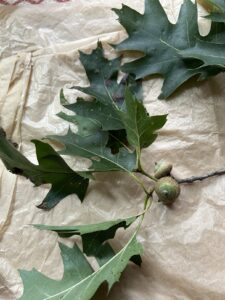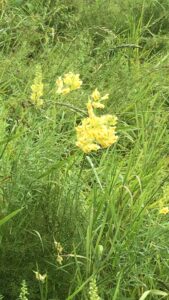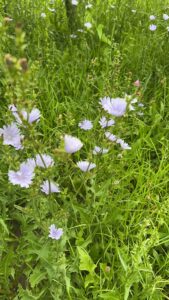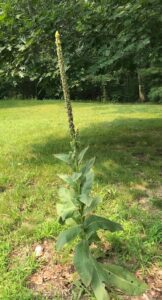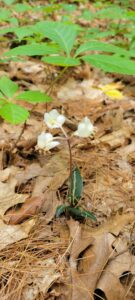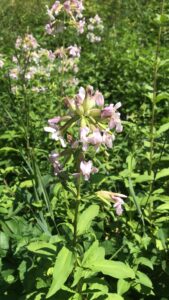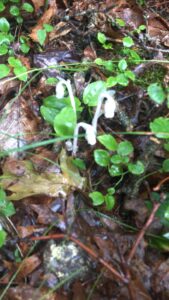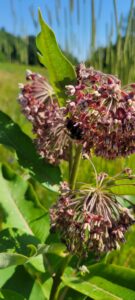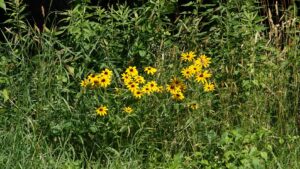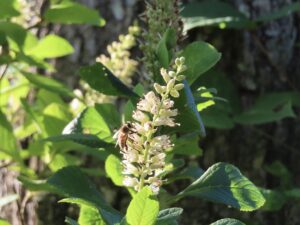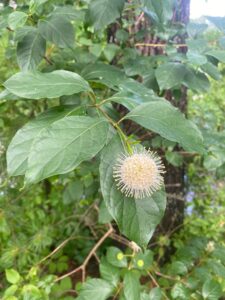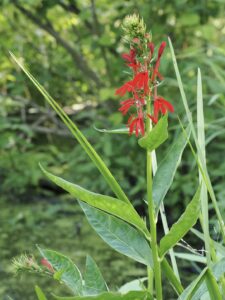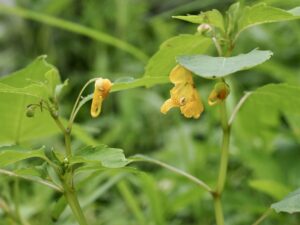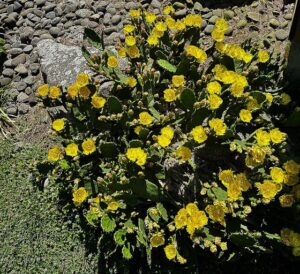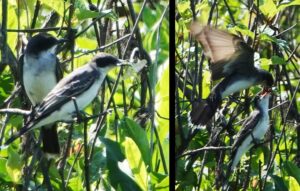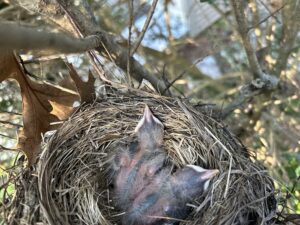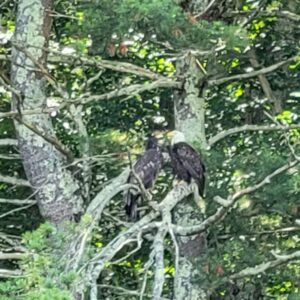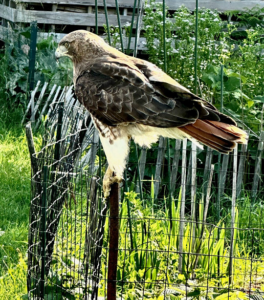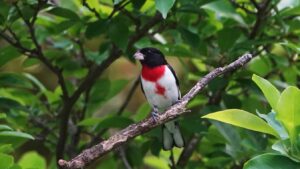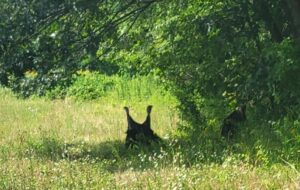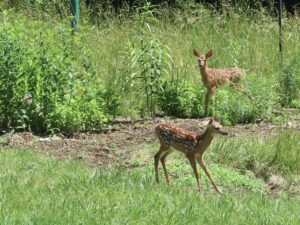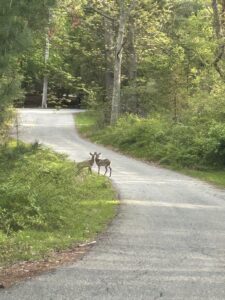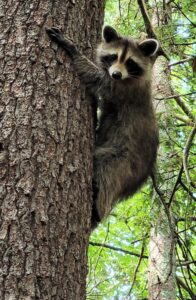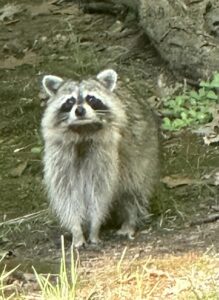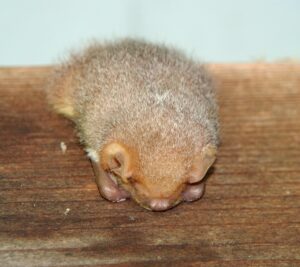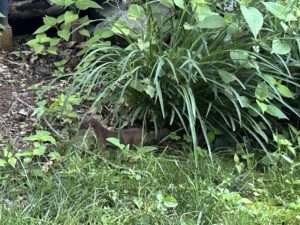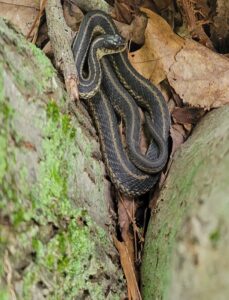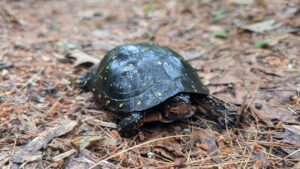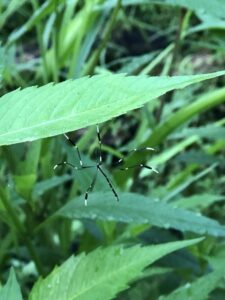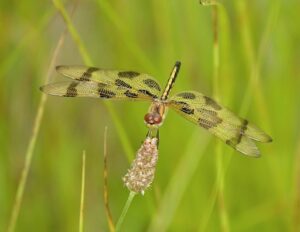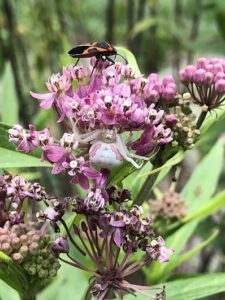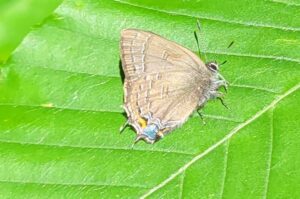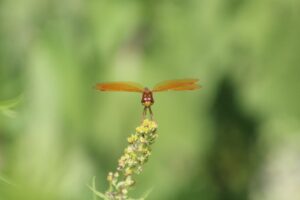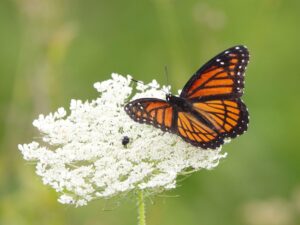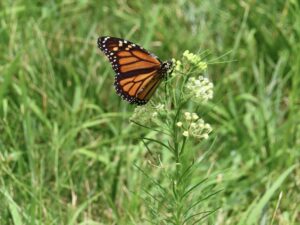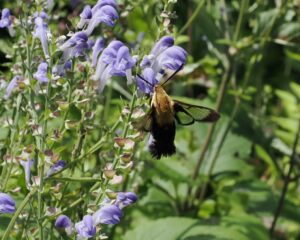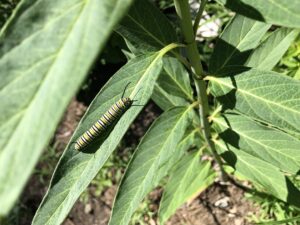Written by Gwyn Loud for the Lincoln Land Conservation Trust. She welcomes your sightings and questions at 781-259-8690 or gwynloud555@gmail.com
Hot and humid. In a nutshell, this has been the weather for the first half of the summer and it is likely the rest of the summer and September may remain hotter than usual. Compared to last year, Boston has nearly doubled the number of ninety degree days. We have had showers and a few thunderstorms, but our gardens and farms are begging for more rain. In metro-west Boston, the historical average July precipitation is 4.07” and as of the 23rd 1.82” of rain had been recorded, with little significant precipitation since then.”
It looks like it may be a good mast year, given the acorns already falling from black and red oaks. Acorns are a major food source for numerous birds and mammals, so a good mast year means they will survive the upcoming winter more easily and have more or larger litters. The whole food chain is affected. Flowers blooming along field edges now include the common mullein with its tall spike, Queen Anne’s lace, butter ’n eggs, chicory, common yarrow, and common soapwort (aka bouncing Bett). Soapwort got its name because the compounds in its leaves, saporins, make a lather in water and can be used as soap. Common milkweed is also flowering and it is worth checking to see if any monarch caterpillars are feeding on it, or any adult monarchs laying eggs.
Along a woodland path you may find spotted wintergreen or see ghostly pipes, the latter being totally white. Ghost pipes have no chlorophyll and thus do not produce carbohydrates through photosynthesis. Instead, they take up nutrients and and carbohydrates from tree roots through an intermediate source, mycorrhizal fungi. In a swampy area look for swamp milkweed, sweet pepper bush, or the spectacular cardinal flower. Jewelweed, another plant which likes damp areas, is just starting to bloom; ruby-throated hummingbirds zip around, sipping nectar from its tubular flowers. Thanks to Rich Rosenbaum’s photo, I learned that we have a native cactus in our region, the Eastern prickly pear, and it has beautiful yellow flowers in the summer. As for invasives, Conservation Dep’t staff, along with volunteers, and helpers from the Concord Land Trust and Weston Conservation have been pulling water chestnut on Fairhaven Bay and some stretches of the Sudbury River. The water chestnut seems to be holding steady at this point. “Nip the knotweed” is also an invasive focus for conservation staff and volunteers who adopt a patch to tackle.
Fewer birds are singing at this season but birds of all species are caring for young, either feeding recent fledglings or raising a second brood. I saw barn swallows swooping down to collect mud by a puddle to use in new nests high in my neighbor’s barn and several people have watched second broods of Eastern bluebirds. At Drumlin Farm, American redstarts (a warbler) nested successfully near the vernal pool and a few killdeer families are still in the crops field. Ron McAdow photographed young Eastern kingbirds, as big as adults, clamoring to be fed by the parents. With my human perspective, I say, “Hey kids, time to get a life and find your own food!” Several people have noticed higher-than-usual numbers of house finches. Osprey visit Farrar Pond often, and observers have spotted bald eagles, two adults, and at least one juvenile, on Fairhaven Bay. Belted kingfishers, making their distinctive rattling call, and great blue herons watch for fish near various ponds.
The community gardens at CCF seem to host a friendly red-tailed hawk which perches on garden posts. A Lexington Road resident was surprised to see a barred owl on her patio, apparently uninjured but just curious to peer in the sliding glass doors! A homeowner on Fox Run Road has had an American goldfinch repeatedly banging into a glass door and window, no doubt thinking its reflection was an adversary. Other avian sightings of note include an orchard oriole near my feeder, a blue-gray gnatcatcher, an indigo bunting at Farm Meadow, mallard and wood duck ducklings, and, in the Van Leer Swamp, a great-crested flycatcher, winter wren, wood thrush, Eastern towhee, and several ovenbirds singing back and forth. Some of our summer birds will quietly disappear over the next month, starting their migration south.
White-tailed deer, from fawns to bucks with growing antlers, have been spotted, and there is a healthy population of chipmunks this year. I saw as many as five at one time under my bird feeder (aka chipmunk and squirrel feeder) and an observer on Forester Road saw one being chased by a short-tailed weasel. Rabbits and woodchucks have been enjoying my garden. Many foxes have been sighted, several people have photographed raccoons, and a red bat was rescued from a driveway (it later flew off). Kathleen Lomatoski wrote about an unusual coyote she saw: “I saw a large deep amber gold more fluffy than usual coyote on Sunday night near Pierce Park. He /she ran towards Trapelo Road through the wooded area. I wonder if this animal is a hybrid of sorts—the coyote had ears going up per usual, yet her/his face and hair were more curly than usual for a coyote and had a fluff factor that got my attention. If I had to guess, I’d say there was “dog” in the mix. Seeing this coyote was eye-popping because of her/his unusual appearance.” Carol Roede’s trail cam has picked up beaver and muskrats, and Rich Rosenbaum caught on video a family of five skunk kits in his backyard.
Garter snakes are “everywhere” this summer. I see them slithering away in my garden or sunning by a rock wall and Will Leona spotted a big one curled up in the crotch of a tree. Painted turtles can be found sunning on rocks and logs in ponds, and snapping turtles are most often seen poking their heads above the water’s surface. A less common species, a spotted turtle, was found along a woodland trail early in July.
Cicadas have started singing their buzzy song, and soon crickets will be in full chorus. It has been an excellent year for fireflies, largely due to the mild winter and enough moisture to allow the larvae to find food and develop (fireflies take two years to become adults). In a swampy area look for crane flies. Naturalist Mary Holland writes about one: “it was drifting across the landscape with its long, banded black-and-white legs outstretched, acting much like a windblown snowflake. This unique and harmless creature proved to be none other than an Eastern Phantom Crane Fly (Bittacomorpha clavipes) so-called because of the appearing/disappearing act that occurs when it flies upright from sun to shade, an optical illusion created because of the boldly striped legs.” Deer flies are much in evidence, quite pesky as they circle around one’s head or bite. In my experience, mosquitoes are not numerous this summer; good for our human pleasure but not for the food chain!
Dragonflies seem plentiful and many of us are observing butterflies, including monarchs. While looking for monarchs on milkweed you might come across a milkweed bug. They are red and black, harmless, and suck the white sap from the milkweed plant. Other species of butterflies spotted this summer include tiger swallowtails, black swallowtails, hairstreaks, and red-spotted purples. Norm Levey photographed a viceroy, easily confused with monarchs. If you think you see a tiny hummingbird on your flowers, look carefully, as it might be a clearwing moth. The two species of clearwings in MA, the hummingbird moth and snowberry clearwing, have fuzzy bodies, and hover and buzz as they feed on nectar, much like hummingbirds.
Looking skyward, we can look forward to the annual Perseid meteor shower, which will peak on August 12 and 13. The moon will set about midnight then, making the skies dark for the best viewing of these “shooting stars” in the wee hours. To quote space.com, “The Perseids are caused by Earth passing through debris — bits of ice and rock — left behind by Comet Swift-Tuttle which last passed close to Earth in 1992. The Perseids peak when Earth passes through the densest and dustiest area. “
I wish my readers happy experiences in the world of nature in August. This column will resume in September.
Links


